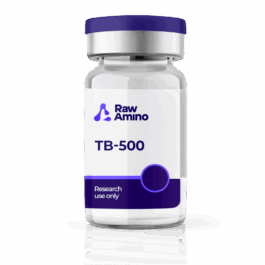Introduction
The aging process represents an orchestrated decline in the capacity of biological systems to maintain cellular integrity and systemic balance. Laboratory studies have identified recurring molecular and cellular events—referred to as hallmarks of aging—that underlie this progressive loss of function across tissues and organ systems. Among the most central of these processes are stem cell exhaustion, chronic inflammatory signaling, and alterations in intercellular communication. These mechanisms appear interconnected, creating feedback loops that exacerbate physiological decline and molecular instability in experimental models of aging.
In controlled research settings, investigations into these hallmarks have revealed how reduced regenerative capacity, sustained inflammatory activity, and impaired cellular signaling each contribute to the erosion of tissue homeostasis. Stem cell exhaustion limits renewal potential; chronic inflammation sustains oxidative and metabolic stress; and miscommunication among cells disrupts coordinated responses to damage or environmental cues. Together, these processes reveal aging as a systems-level phenomenon driven by cumulative molecular noise, transcriptional drift, and immune imbalance. Understanding these networks in preclinical contexts is essential for mapping the fundamental biology of organismal aging.
Diminished Regenerative Potential: Mechanisms of Stem Cell Exhaustion
Stem cells are undifferentiated progenitors responsible for maintaining and regenerating tissues through self-renewal and lineage commitment. In laboratory models, stem cell exhaustion describes a measurable decline in both the number and functional capacity of these progenitor cells over time. Multiple mechanisms have been proposed to explain this phenomenon, including oxidative damage, telomere attrition, and chronic activation of inflammatory cytokines that alter the stem cell niche. As stem cells lose genomic and metabolic stability, their capacity to divide symmetrically and replenish specialized cells diminishes, leading to impaired tissue renewal observed in aged systems.
Experimental evidence suggests that oxidative stress exerts a primary influence on stem cell exhaustion. The accumulation of reactive oxygen species (ROS) disrupts redox balance, induces mitochondrial DNA mutations, and activates p38 MAPK signaling, which biases stem cells toward differentiation and senescence. Telomere shortening further limits replicative lifespan by triggering DNA damage responses, while prolonged exposure to pro-inflammatory molecules such as TNF-α and IL-1β interferes with stem cell quiescence and self-renewal. Laboratory investigations have explored interventions that preserve stem cell pools by enhancing autophagy, modulating nutrient-sensing pathways, or restoring redox homeostasis. Collectively, these findings indicate that stem cell exhaustion arises not from a single cause but from the cumulative burden of molecular stressors that disrupt cellular equilibrium.
Persistent Low-Grade Inflammation: The Biology of Inflammaging
One of the most consistently observed hallmarks of biological aging is the chronic, low-grade inflammatory state often referred to as inflammaging. This condition emerges when the resolution phase of inflammation fails, leaving immune signaling persistently active even in the absence of acute stimuli. Laboratory investigations have revealed that mitochondrial dysfunction, accumulation of senescent cells, and impaired autophagic clearance all contribute to sustained cytokine release and innate immune activation. The NLRP3 inflammasome, a key intracellular signaling complex, has been identified as a central regulator of this process, amplifying IL-1β and IL-18 production in multiple tissue types.
At the cellular level, chronic inflammation drives a self-perpetuating cycle of damage. Reactive oxygen and nitrogen species produced during sustained immune activation promote DNA oxidation and lipid peroxidation, further stimulating pro-inflammatory gene expression. In experimental models, this cycle is associated with metabolic reprogramming of macrophages and microglia, shifting their function from repair-oriented to inflammatory phenotypes. Persistent activation of NF-κB and JAK/STAT pathways maintains cytokine production and interferes with tissue regeneration. Preclinical studies exploring interventions that suppress inflammasome signaling or enhance mitophagy have demonstrated measurable reductions in inflammatory markers, suggesting possible molecular strategies to restore immune homeostasis in aging organisms.
Breakdown of Signaling Integrity: Altered Intercellular Communication
Cell-to-cell communication is essential for synchronizing physiological processes, coordinating growth, metabolism, and defense responses. In aging models, this communication network becomes progressively disrupted—a phenomenon termed altered intercellular communication. This breakdown manifests as aberrant signaling across endocrine, paracrine, and neuronal pathways, resulting in asynchronous cellular behavior. Secreted factors from senescent cells, collectively known as the senescence-associated secretory phenotype (SASP), play a major role by introducing pro-inflammatory and pro-fibrotic signals into the tissue microenvironment.
From a molecular standpoint, age-associated miscommunication arises from both intrinsic and extrinsic alterations. Intrinsically, transcriptional drift and epigenetic reprogramming alter signal receptor expression, while extrinsically, circulating cytokines, hormones, and exosomes deliver conflicting instructions to target cells. For example, chronic overactivation of mTOR and insulin-like growth factor 1 (IGF-1) pathways may lead to cellular hypertrophy and stress signaling instead of balanced metabolic coordination. Experimental research indicates that recalibrating nutrient-sensing and signaling pathways can partially restore intercellular communication fidelity. Mechanistic insights from model organisms suggest that balanced redox signaling, intact extracellular vesicle trafficking, and precise regulation of growth factors are vital to maintaining coordinated cellular responses during aging.
Conclusion
Stem cell exhaustion, persistent inflammation, and disrupted intercellular signaling together represent an interdependent triad driving systemic aging. Each process both influences and reinforces the others—stem cell depletion limits tissue renewal, chronic inflammation accelerates cellular stress, and impaired signaling amplifies miscommunication between organ systems. In controlled research environments, these hallmarks collectively illustrate the concept of aging as a network-level destabilization rather than a linear sequence of failures.
Future investigations in preclinical biology continue to focus on identifying molecular checkpoints within these pathways that may preserve regenerative capacity, reduce inflammatory feedback, and maintain communication fidelity among cells. Such studies aim not to reverse aging, but to deepen understanding of the interconnected molecular systems that define it. Continued work in this area is critical to mapping the full landscape of aging biology across cellular, molecular, and systemic dimensions.
References
- López-Otín, C., Blasco, M. A., Partridge, L., Serrano, M., & Kroemer, G. (2023). Hallmarks of Aging: An Expanding Universe. Cell, 186(2), 243–278. https://doi.org/10.1016/j.cell.2022.11.001
- Leonardi, G. C., Accardi, G., Monastero, R., et al. (2018). Ageing: From Inflammation to Cancer. Immunity & Ageing, 15(1), 1. https://doi.org/10.1186/s12979-017-0112-5
- López-Otín, C., Blasco, M. A., Partridge, L., Serrano, M., & Kroemer, G. (2013). The Hallmarks of Aging. Cell, 153(6), 1194–1217. https://doi.org/10.1016/j.cell.2013.05.039
Disclaimer: The information provided is intended solely for educational and scientific discussion. The compounds described are strictly intended for laboratory research and in-vitro studies only. They are not approved for human or animal consumption, medical use, or diagnostic purposes. Handling is prohibited unless performed by licensed researchers and qualified professionals in controlled laboratory environments.



